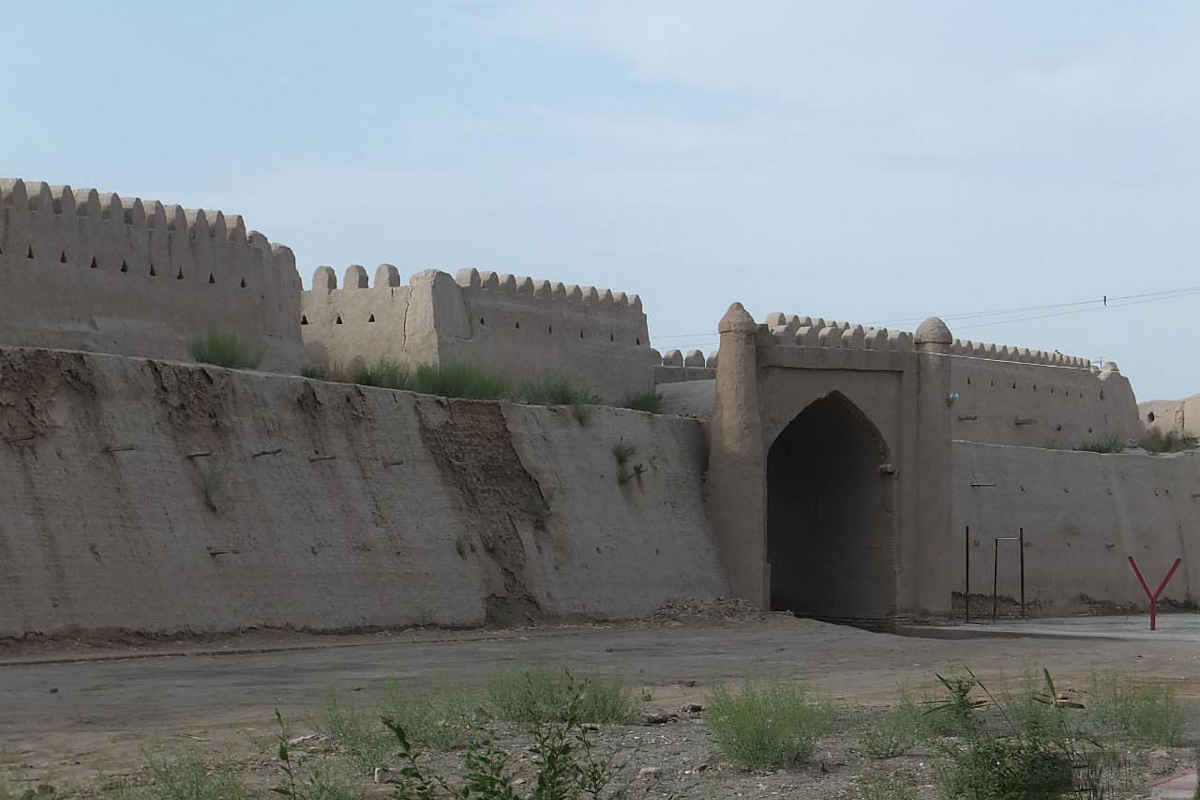Khiva - Dishan Kala

Dishan-Kala of Khiva – the outer Fortress
Dishan-Kala, which translates as ‘outer city’ or ‘outer fortress’, is a significant extension of the historic city of Khiva. This fortification was built between 1842 and 1889 to protect the city from frequent Turkmen attacks. It comprises an impressive wall length of around six kilometres and encloses the area outside the inner fortress of Ichan-Kala.
The creation of Dishan-Kala is closely linked to the forced resettlement of 20,000 inhabitants from Khorasan, who were brought to Khorezm and in particular to Khiva. In view of the growing population and the increasing threat of enemy attacks, the need for an expanded defence system became obvious. Thus, under Alla-Kuli-Khan, the construction of the mighty walls began, which not only provided protection but also consolidated the khan’s sphere of control.
Architectural features and construction method
The fortification walls of Dishan-Kala were built according to traditional construction methods. Every household in the khanate had to provide a labourer who worked on the construction site for 12 to 30 days a year without pay. According to legend, the walls were completed in just six weeks – an achievement made possible by the massive labour of the entire population. In reality, however, the construction took several years and it is reported that farmers from various regions, including Mangit, Shawat, Khiva, Khazarasp and Urgench, were conscripted to realise the construction project.
The walls of Dishan-Kala were provided with ten monumental gates, each named after its geographical location or neighbouring villages:
- Hazarasp Gate – in the east, named after the Hazarasp road.
- Pishkanik Gate – in the east, named after the village of Pishkanik.
- Bagishamol Gate – in the south, named after a large land garden of Alla-Kuli-Khan (formerly known as Angarik Gate).
- Sheikhlar Gate – in the south, named after a village that belonged to the Waqf of Pahlavan-Mahmud Gumbez.
- Tazabagh Gate – in the south, named after the land garden of Muhammad-Rakhimkhan II (formerly known as Sirchali Gate).
- Shahi-Mardan Gate – in the west, named after a nearby settlement.
- Dash-Ayak Gate – in the north, named after a village of the same name.
- Kosh-Darvoza Gate – in the north, along the road to Urgench, named after its two (kosh) arched gates.
- Gadaylar Gate – in the north, named after the Gadaylar neighbourhood (‘beggars’ quarter”).
- Gindum-Kan Gate – in the north, named after a neighbouring village.
The significance of Dishan-Kala
Dishan-Kala was more than just a defence complex; it was a suburb in its own right with a large number of bazaars, craft workshops and housing estates. It was mainly inhabited by craftsmen, day labourers and merchants, while the palaces of the nobility and the religious centres were located within the inner fortress of Ichan-Kala. Thanks to an ingenious system of irrigation channels (aryks), the inhabitants of Dishan-Kala were able to cultivate their own gardens and orchards, which led to a marked difference in the urban structure compared to Ichan-Kala.
One of the most notorious places in Dishan-Kala was the slave market, which flourished under the rule of Alla-Kuli-Khan. In the 19th century, Khiva was one of the central trading centres for the slave trade in Central Asia. Persian and Caucasian prisoners in particular were sold here until the Russian conquest of Khiva in 1873 put an end to this inhumane trade.
Today’s significance and preservation
Although the walls of Dishan-Kala have been partially destroyed over the centuries, significant sections still remain. These relics are a reminder of Khiva’s historical importance as the strategic and economic centre of Central Asia. Today, Dishan-Kala is an integral part of the city and retains its unique historical character. The surviving sections of wall and gates stand as a testament to the military and architectural feat of the 19th century and are an integral part of the cultural heritage of Uzbekistan.
